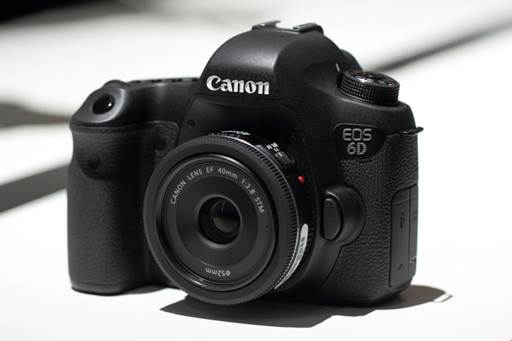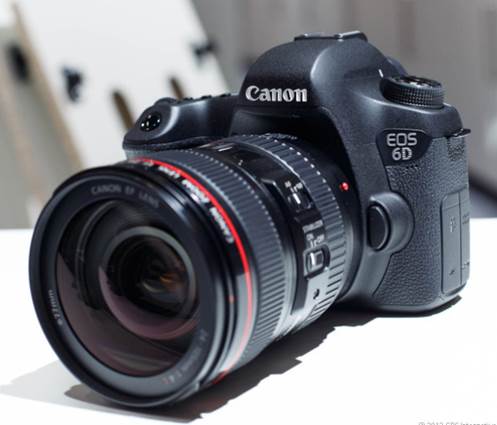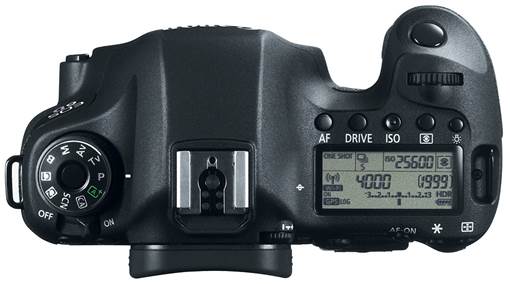Outstanding image quality and
sophisticated Wi-Fi functions, but the autofocus system limits its appeal
The EOS 6D is Canon’s most affordable
full-frame SLR to date. Its sensor is similar to the one in the luxurious 5D
Mark III (web ID: 377806), but its controls have more in common with the
cheaper 60D. It’s also the first Canon SLR to incorporate Wi-Fi and GPS, and
with a price right between those two cameras, it’s a tempting proposition for
keen amateurs who want the low noise and big viewfinder that come with a
full-frame camera. The question is: is it good enough to dislodge the similar
Nikon D600 (web ID: 378103) from our A-List?

A
full-frame sensor ensures incredibly low noise at high ISO speeds
Wi-Fi and GPS are optional extras on the
D600, so having them built into the 6D gets it off to a good start. The GPS
function keeps working when the camera is powered down so it needn’t spend ages
recalculating its position.
The Wi-Fi allows the camera to connect to
an app for Android and iOS, which has a remote-shooting mode complete with live
view, autofocus point and exposure control. An elegant image browser offers
swift full-screen views and the ability to embed star ratings back onto the
camera’s SD card. The other wireless functions are rather fiddly to set up, but
the list is impressive, with tethered PC and Mac shooting, uploads to social
media and wireless printing.
The 6D’s controls are generally well laid
out, but there’s no dedicated white-balance button. The Q button and its
associated menu is the quickest means of access, but manual white-balance
calibration is available only via the main menu. However, the 6D compensates
with its AF-On button. This triggers autofocus, giving the option to use the
shutter release to take photos without having to refocus before each shot.
Performance is excellent; hitting 4.2fps in continuous mode (the D600 managed
5.5fps, however).

The
6D’s controls are generally well laid out, but there’s no dedicated
white-balance button.
There’s no integrated flash, which some will
see as a drawback, but others will consider it testimony to the camera’s
incredible low-light performance. It also lacks an autofocus assist lamp. This
is something that Canon omits from all its SLRs, but autofocus in extremely low
light can suffer as a result.
The 6D’s weakest area is its autofocus
sensor. As with the D600, the 6D’s autofocus points are bunched towards the
center of the frame more than we’d like, but while the D600 has 39 points with
nine cross-type for increased sensitivity, the 6D has only 11 points, with a
single cross-type point in the center. So few points means automatic
subject-tracking isn’t available. It also meant we often found ourselves
focusing and then recomposing the shot. How much of a drawback this is depends
on the kind of subjects you tend to shoot. It makes little difference for
landscape photography; it’s a bit of a nuisance for portraits; but it’s a
disaster for sports photography.
There are no such issues to report
regarding image quality. The 20-megapixel sensor is a little lower than the
D600’s 24 megapixels and the 5DMark III’s 22 megapixels, but there isn’t much
in it. All three excel for low noise at fast ISO speeds, but the 6D’s JPEGs
edged into the lead, making it the best low-light camera we’ve ever reviewed.
Photos were fit for publication up to ISO 12800, and even ISO 51200 produced
passable snaps. Details at lower ISO were crisp and precise, accurately picking
out fine textures such as hair and fabric. Automatic exposures were expertly
judged and, as always, there’s ample scope to customize the JPEG processing
settings. Compared with the D600, the differences fall somewhere between
subjective and negligible both take sublime photos.

Controls
are more similar to the Canon 60D than the 5D Mark III
Their video modes are easier to tell apart.
The 6D’s output is noticeably lower-resolution than that of the D600, with
aggressive sharpening, and its punchy contrast comes at the cost of clipped
highlights. Both have a mic input, but the 6D lacks a headphone output. It does
provide full access to exposure controls, though, whereas the D600’s aperture
is fixed while recording.
The EOS 6D is an excellent choice for Canon
loyalists who are considering moving to full-frame for the first time. The lower
noise, shallower depth of field and larger viewfinder that come with a full-frame
sensor, along with the Wi-Fi and GPS functions, add up to a significant upgrade.
However, the 60D and even the 650D have nine cross-type autofocus sensors, and
the 6D’s autofocus system compares unfavorably to that of the Nikon D600. It’s
a close call, but the D600 remains our top recommendation.
|
Specifications
§ Price:
$1,874
§ Ratings:
5/6
§ 20mp
full-frame sensor
§ 11-point
autofocus (1 cross-type)
§ 5.5fps
continuous mode (quoted)
§ Dual
SDXC slots
§ 1yr
RTB warranty
§ 145
x 71 x 111 (WDH)
§ Weights:
850g (body only)
|